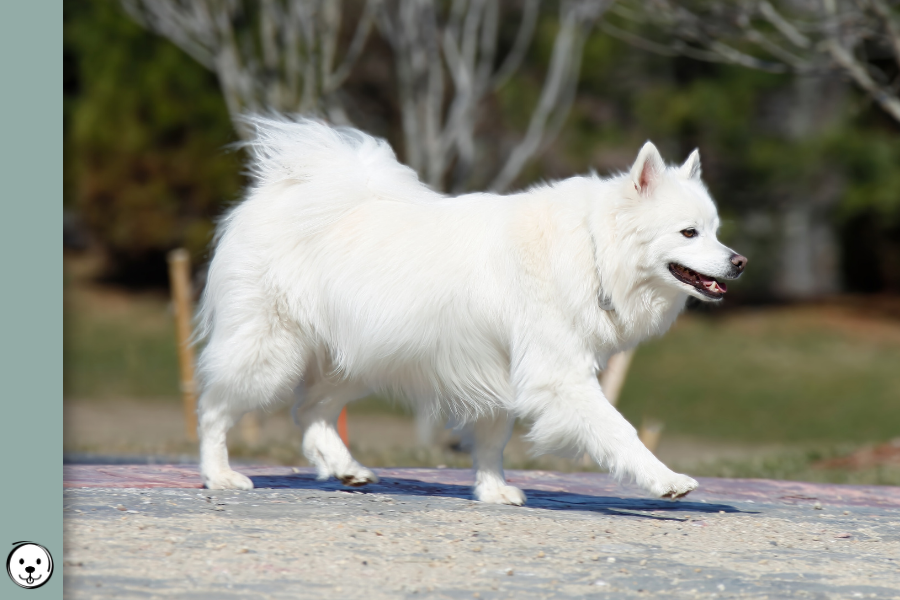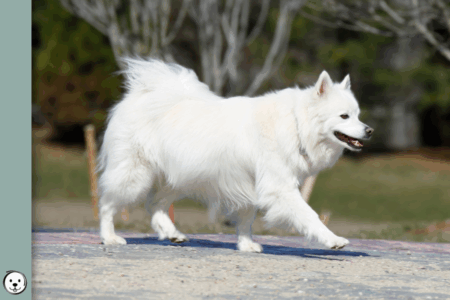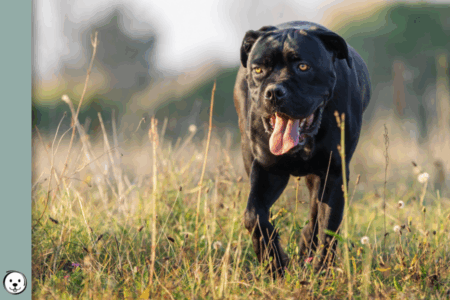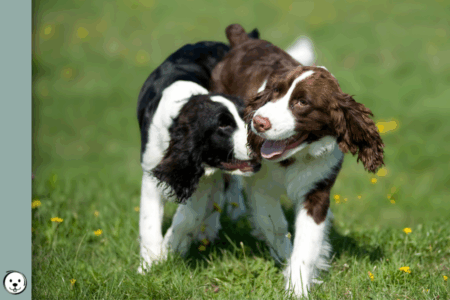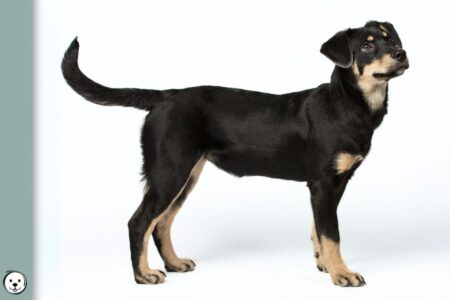The American Eskimo Dog is a small spitz-type breed with a fluffy double coat. American Eskimo Dog colors are limited, they only come with either a solid white or a pale cream biscuit coat.
Table of Contents
American Eskimo Dog Breed Standard
Eskies are one of the many breeds descended from European Spitz dogs. They are closely related to the German Spitz, the Pomeranian, the Japanese Spitz, or the Volpino Italiano.
But the AKC Eskimo Dog is not recognized by the FCI or KC.
“Color: Pure white is the preferred color, although white with biscuit cream is permissible.”
American Eskimo Dog
AKC Breed Standard[1]
The AKC provides a list of colors and markings for each breed.
These are classified as breed standard color (S) or an alternate color (A) for conformation show purposes.
| Colors | |
|---|---|
| White | S |
| White & Biscuit | S |
American Eskimo Dog Color Chart
The American Eskimo Dog color chart is very simple, there are only two colors:
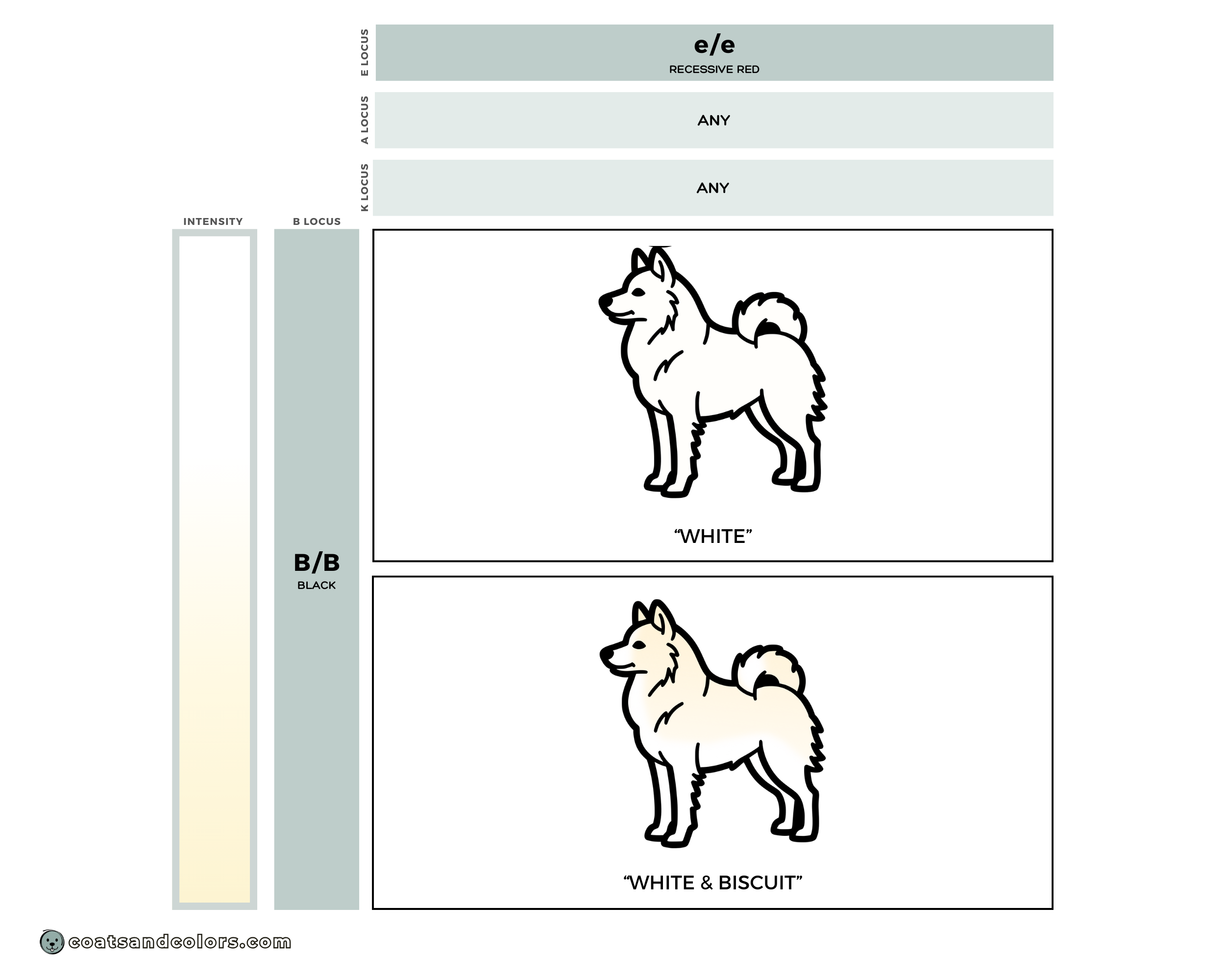
American Eskimo Dog Coat Type
The coat type can significantly affect how we perceive coat colors.
Eskies have a typical stand-off spitz-type coat. Most are long-haired, some test as short-haired[4]. I don’t know, if some people produce smooth Eskies or if they just have one of the less common l alleles.
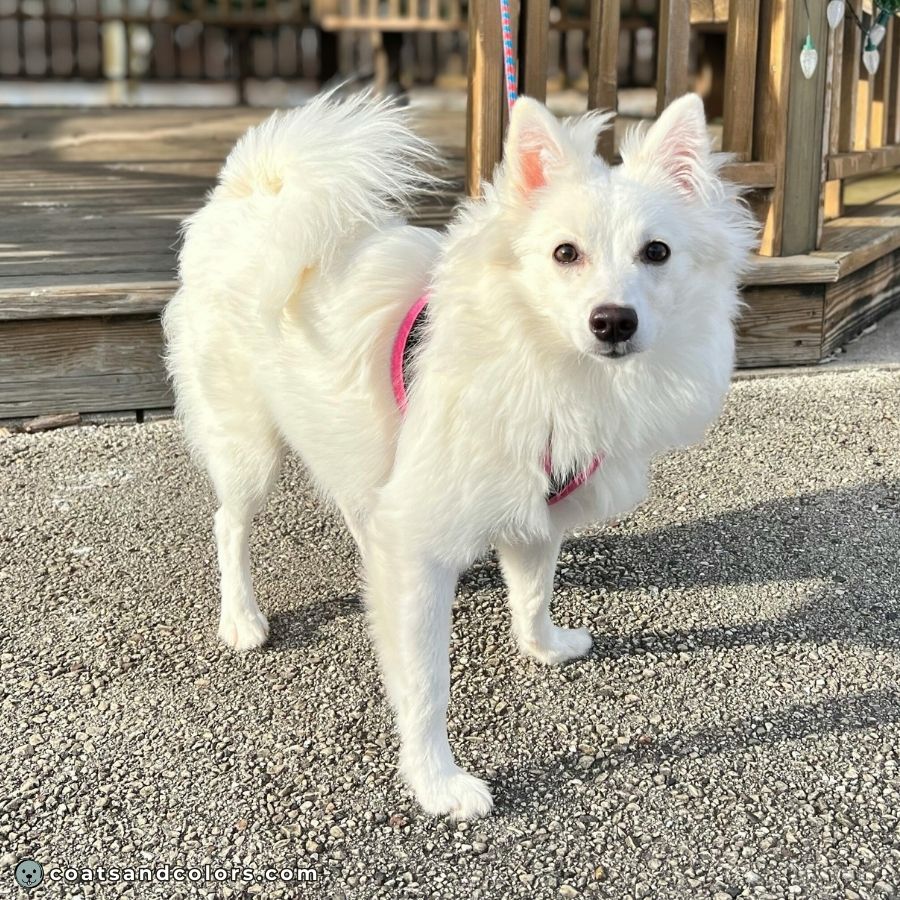
American Eskimo Dogs have a smooth face, a longer ruff, and lots of feathering on their hind legs and tail. Their double coat has a dense undercoat and long straight guard hairs.
Some Eskies have a variant for curly coat[4]. This might produce a wavy coat, which goes against the requirement of their breed standard to always have a straight coat “with no curl or wave“.
American Eskimo Dog Standard Colors
The only accepted base pattern in American Eskimo Dogs is recessive red. They have very pale phaeomelanin which can appear off-white or biscuit-colored. Many Eskies have white markings.
This is the same color you find in white Huskies, Samoyeds, Pomeranians and other Spitz breeds, Poodles, Maltese, Westies, and dozens of other breeds with coats so pale cream they appear white.
Some more details on standard colors in Eskies:
White American Eskimo Dog
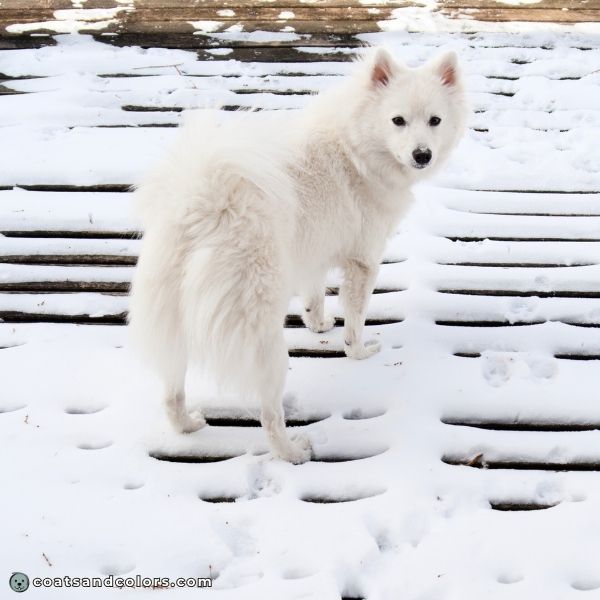

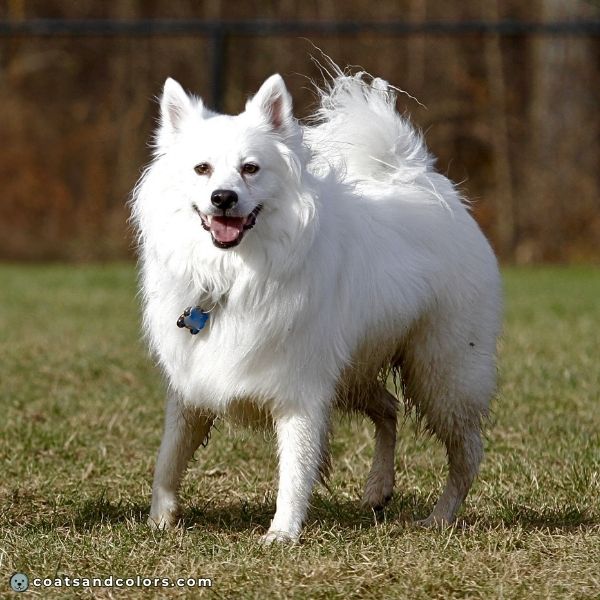
Eumelanin:
black-based pattern (B/B D/D)
Phaeomelanin:
white
Base Pattern:
recessive red (e/e)
White:
solid (S/S)
white markings (sP/-)
A solid white coat is the official ideal when it comes to American Eskimo colors.
Their white color is achieved by a recessive red (e/e) pattern with very low red intensity.
Their solid pattern causes them to only produce red phaeomelanin in their coat. And the very low red intensity causes them to appear white. But even the lightest shade of phaeomelanin will still be a very pale cream or off-white color and not truly as colorless or “snow white” as a sheet of paper.
Dogs with this pattern will always have pale whiskers. Eskies are also supposed to have white nails. And their breed standard calls for their eyelashes to be white.
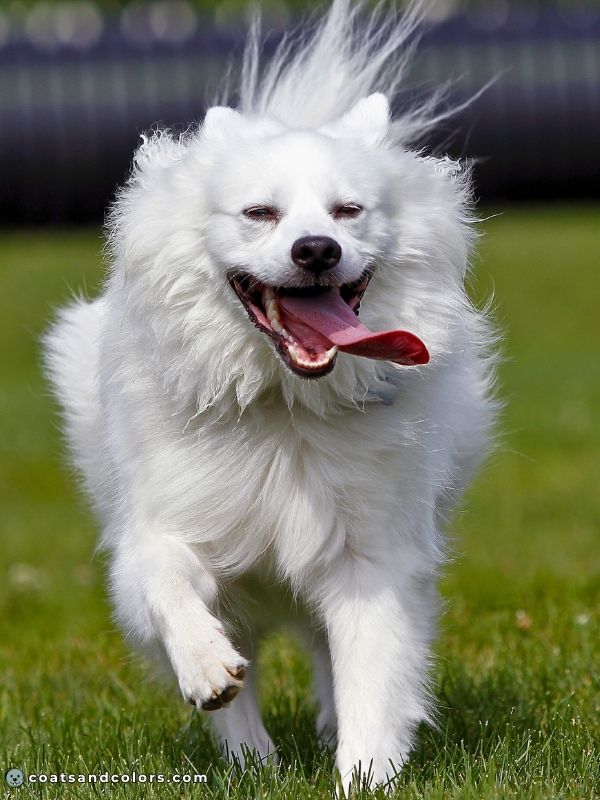
Surprisingly, many Eskies seem to have white markings in their coat. These are caused by a true lack of pigment in some areas. However, the distribution of real white is impossible to see against their already white coat color. You can’t see white markings on a dog with a white coat colors.
Their skin pigment is black (B/B D/D) which gives them a black nose, eye rims, lips, and paw pads. Many dogs with a recessive red pattern tend to have some fading nose pigment.
Biscuit Cream American Eskimo Dog
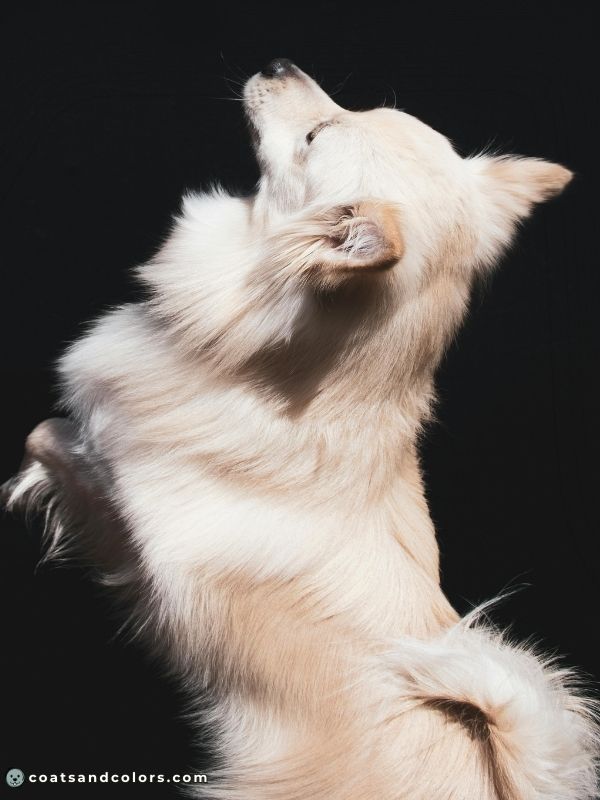
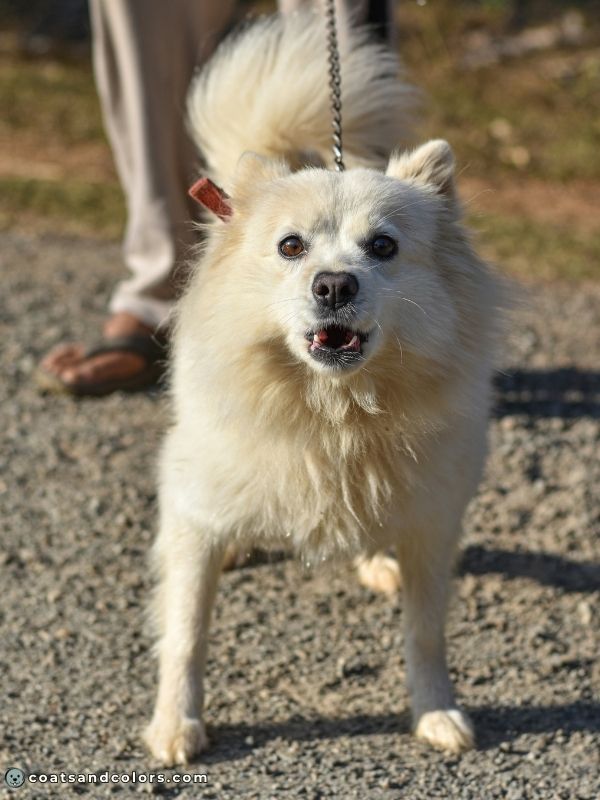
Eumelanin:
black-based pattern (B/B D/D)
Phaeomelanin:
biscuit
Base Pattern:
recessive red (e/e)
White:
solid (S/S)
white markings (sP/-)
In American Eskimo Dog colors, biscuit just means a very “pale reddish cream“.
Biscuit Eskies have the same black-based recessive red pattern (e/e) as their sparkling white cousins. Just with an ever so slightly richer pigment intensity that gives a very light tan color.
Eskimo dogs can have any color on a smooth gradient from white to biscuit. It’s normal for dogs with recessive red to have slightly more intense red shading on the ears or back.

The official term for this pattern is “white & biscuit” since these dogs are still very pale with fluffy whitish undercoat, they never look solid yellow (like a Golden Retriever, for example). A rich biscuit-cream color can provide enough contrast to sometimes make white markings in their pattern visible.
Their fluffy coat can hide the outline of their biscuit markings. The illustrated breed standard even says, “many times the biscuit cream markings will be almost imperceptible when the Eskie is in full coat.”[3]
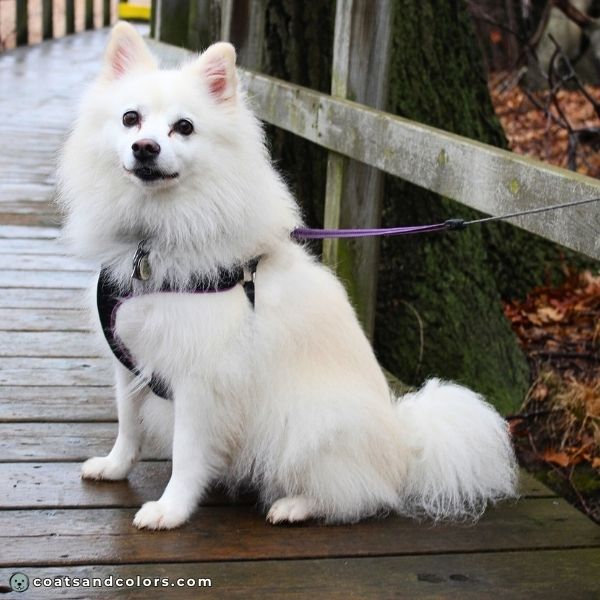
American Eskimo Dog White Markings
American Eskimo Dogs may have white spotting, almost all have at least one piebald variant (sP/-)[4]. Dogs with one copy (S/sP) can have no white at all, but many have some amount of white. Dogs with two copies (sP/sP) may be piebald or have even more extended white.
Some biscuit Eskies have a thin white blaze or a white chest or white paws. The white Eskies have this, too. White spotting is just not visible, if all the red patches have been diluted too far.
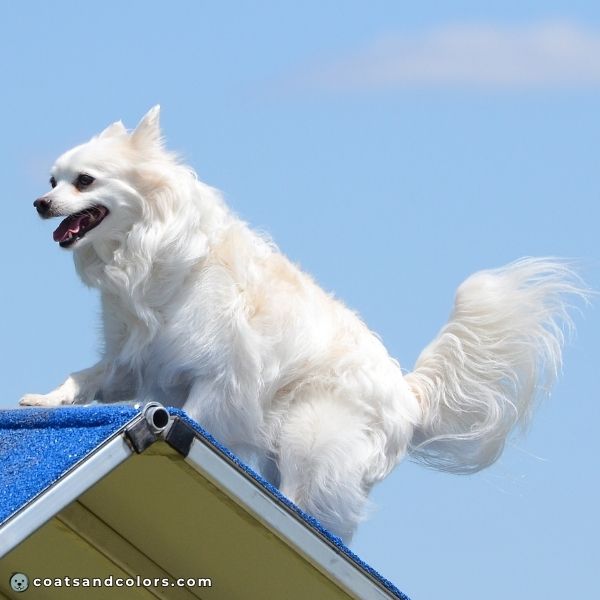
The skin under white markings will be pink, and the AKC standard says “the skin of the American Eskimo Dog is pink or gray“, indirectly supporting dogs to have some white markings.
But they also have measures to get breeders to select away from too extended white. They do this by mentioning blue eyes and pink eye rims or pink lips as being faulty in this breed.
American Eskimo Dog Eye Colors
“Dark to medium brown is the preferred eye color. Eye rims are black to dark brown. Eyelashes are white. Faults – amber eye color or pink eye rims. Disqualification – blue eyes.”
AKC Breed Standard[1]
Eye color depends on the color, amount, and distribution of melanin in the iris.
American Eskimo Dogs produce black eumelanin (B/B D/D).
They are bred to have dark eyes. But eye color can vary from lighter to darker shades of brown.
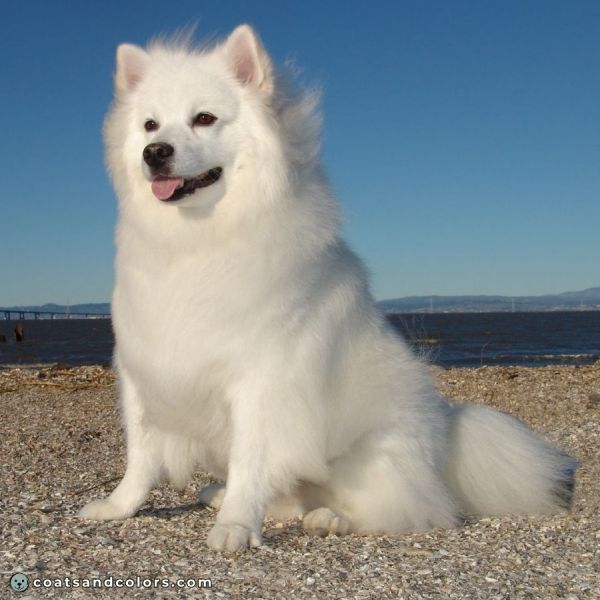
American Eskimo Dog Nose Colors
“Nose pigment is black to dark brown. Faults – pink nose pigment or pink lip pigment.”
AKC Breed Standard[1]


American Eskimo Dogs are supposed to have a black to dark brown nose.
But Eskies do not actually want brown pigment, these lighter colors are caused by weak black.
Their recessive red pattern predisposes Eskies to nose pigment fading or “snow nose”. This can cause their nose to turn a brownish-gray or pink color, often with some seasonal change in pigmentation.
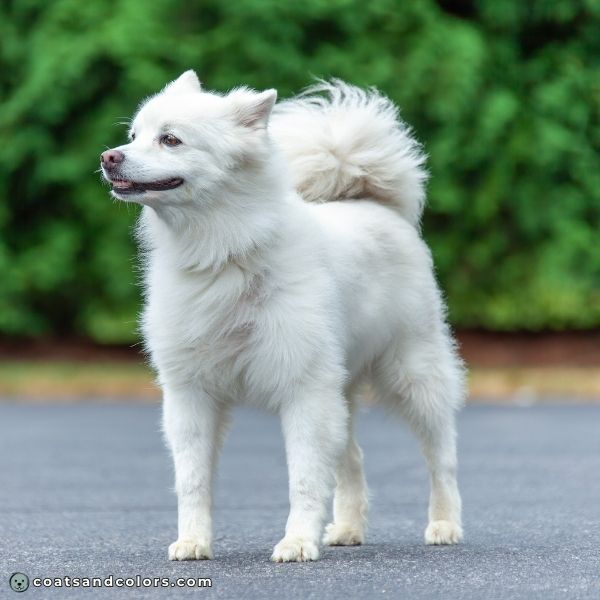
American Eskimo Dog Non-Standard Colors
Almost all standards list coat colors that are not desirable.
Some out-of-standard coat colors can even disqualify a dog from breeding.
“Disqualifications: Any color other than white or biscuit cream.”
AKC Breed Standard[1]
These are some non-standard colors of the American Eskimo Dog:
Liver American Eskimo Dog
A very small number of Eskies have brown eumelanin (b/b).
This will cause a brown-based recessive red pattern in b/b e/e dogs. This is a mismark since it will not only cause a brown nose, and brown eye rims, lips or nails. It will also likely give light amber eyes.
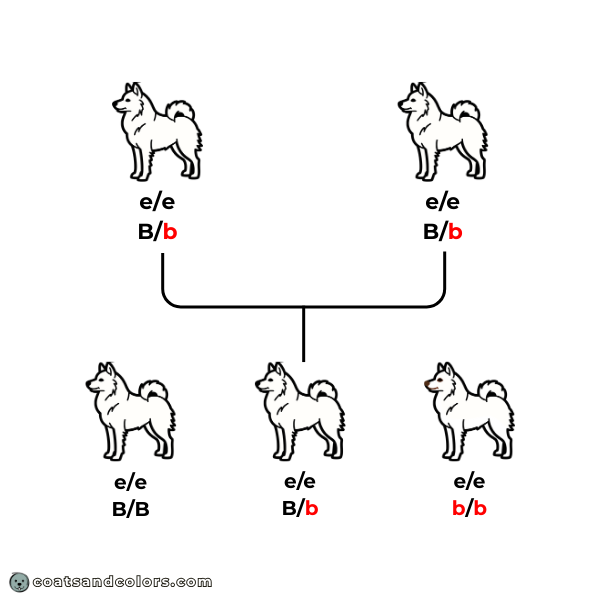
Black American Eskimo Dog
The American Eskimo Dog Club of America has an image of a black and a sable mismark Eskie in their judge’s education material. But how can a recessive red (e/e) breed even produce black puppies?
To get a black American Eskimo Dog, one would have to breed from dogs that are E/- on the E locus, so they can produce a dominant black (E/- KB/-) or a recessive black (E/- ky/ky a/a) solid dark pattern.
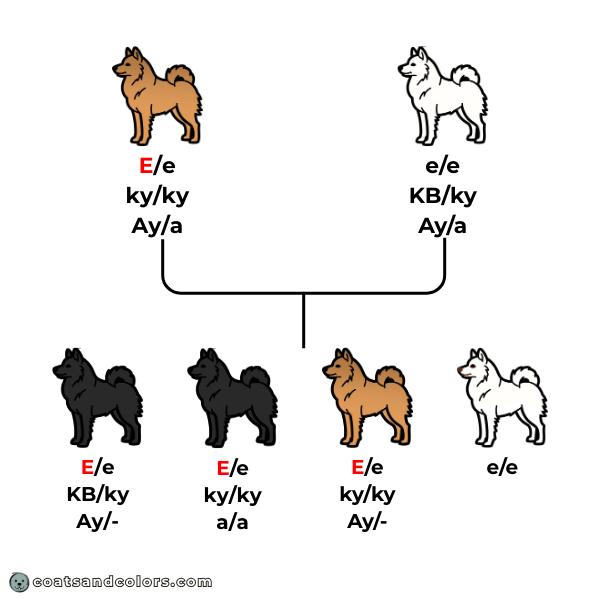
The wild type (E) is dominant to the recessive red variant (e). There is no way to accidentally breed a black American Eskimo Dog from two recessive red e/e parents. The E allele has to come from somewhere., which means all black Eskimo Dogs have a parent that was not standard-colored e/e.
Are there clear sables E/e Ay/- that pass as biscuit? Or do some breeders produce black Eskies on purpose by crossbreeding with other spitz-type breeds like Pomeranian? I really don’t know!
Patterned American Eskimo Dog
There are some other mismarks that happen when a dog is E/- ky/ky and can express its A locus pattern. The possible patterns in Eskies are sable (Ay), agouti (aw), or tan points (at)[2].
And again, these patterns don’t happen when breeding only e/e to e/e. One parent has to provide the wild-type E variant, and both have to provide ky to produce patterned offspring like this.
I don’t know if brindle (kbr) also occurs in mismarked Eskies.
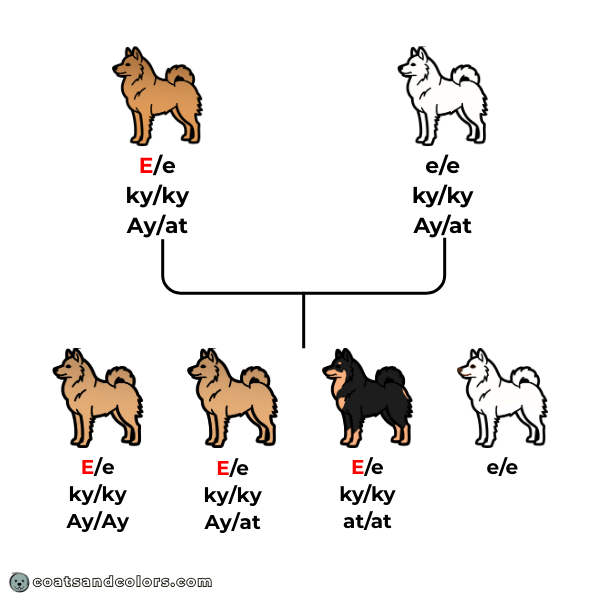
Learn More
Links
[1] American Kennel Club (AKC): American Eskimo Dog
[2] Dreger et al. (2019). True Colors: Commercially-acquired morphological genotypes reveal hidden allele variation among dog breeds, informing both trait ancestry and breed potential. PLoS ONE 14(10): e0223995. https://doi.org/10.1371/journal.pone.0223995
[3] American Eskimo Dog Club of America: Illustrated Breed Standard
Image Credits
© MrsGotlib/yayimages.com
© Mohan Nannapaneni/pixabay.com
© carpenter844/pixabay.com
© Michael Felix/pixabay.com
© Danuta Niemiec/pixabay.com
© Ine/pexels.com
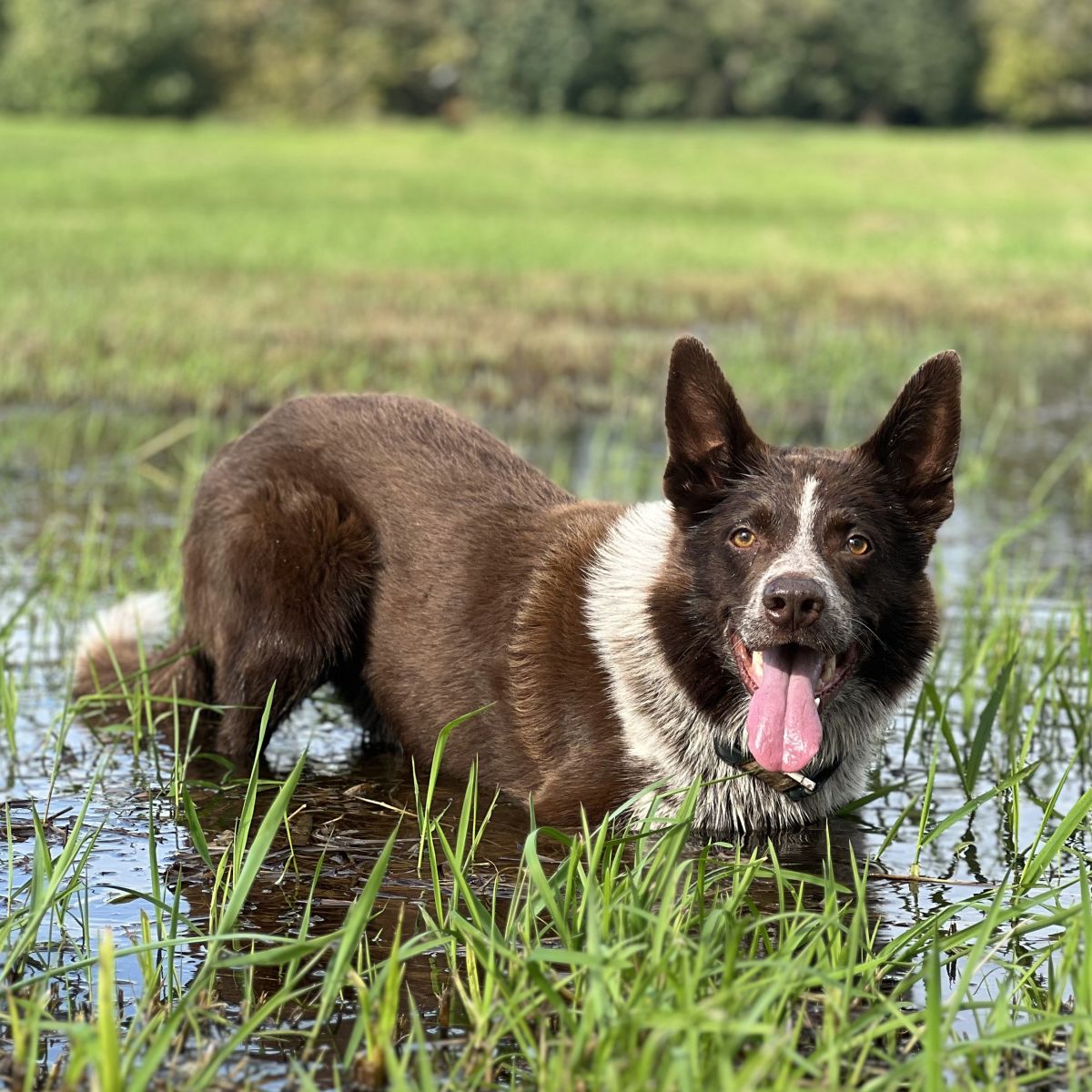
Hi! I’m Steffi. I am a biologist and a big time dog nerd. You are curious about coat color genetics? You’ve come to the right place! Read more.

